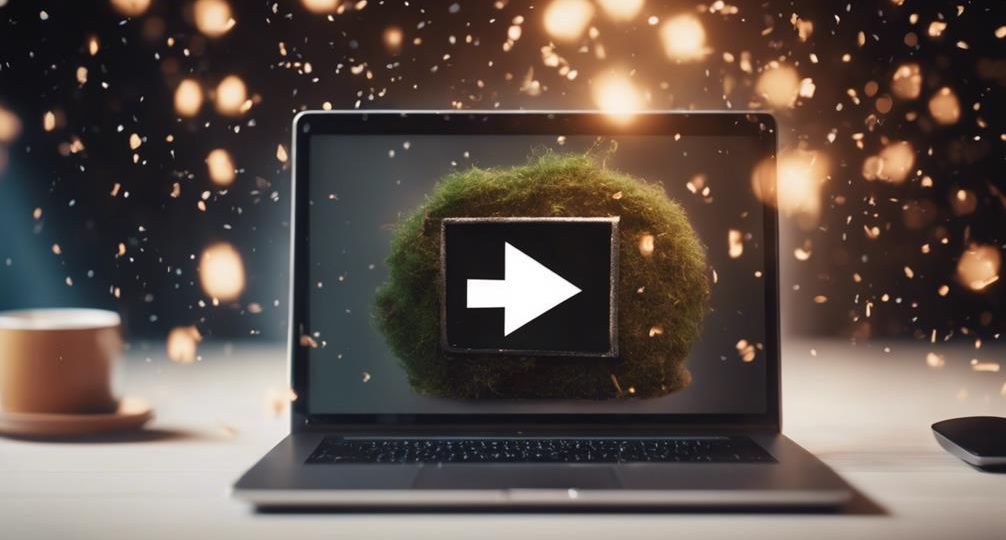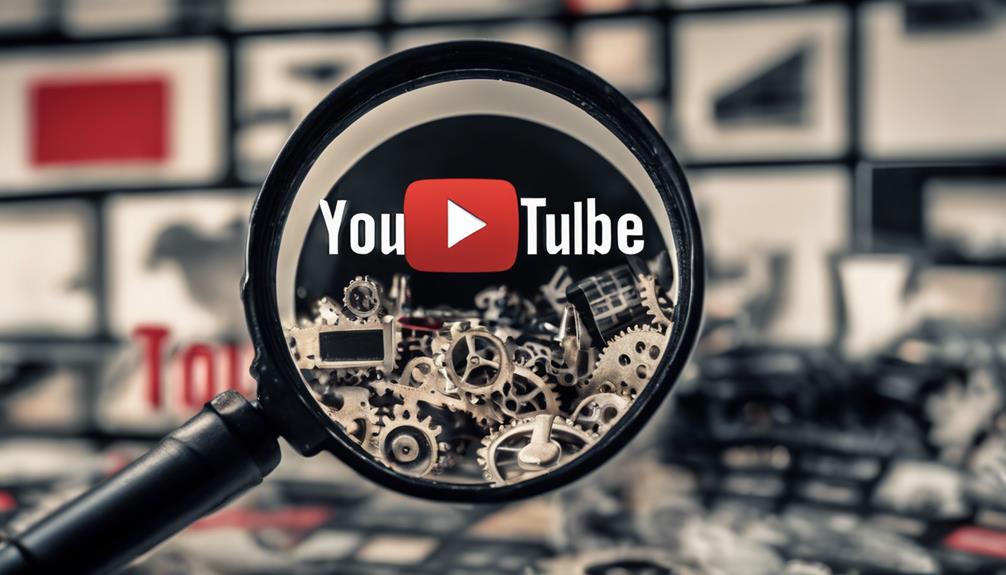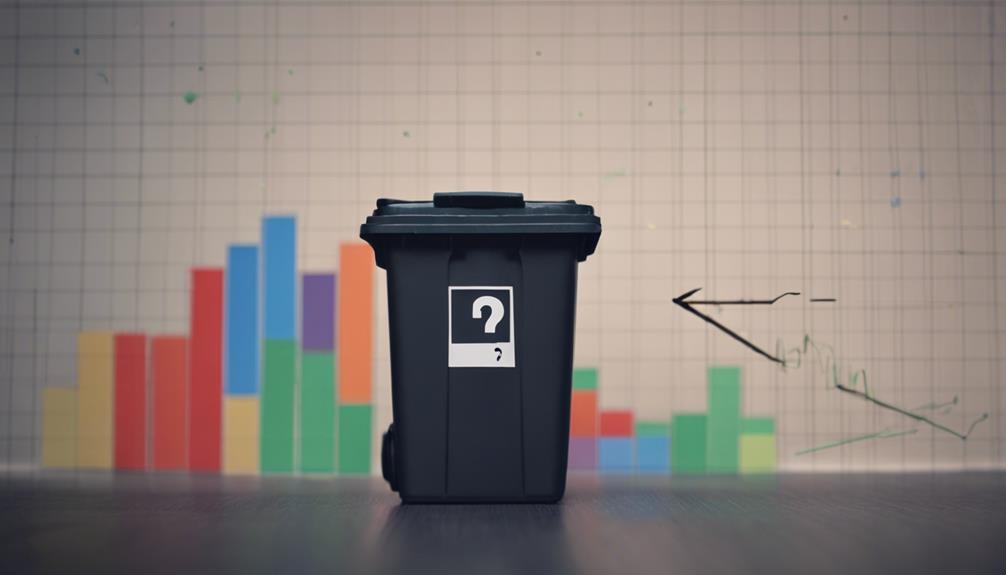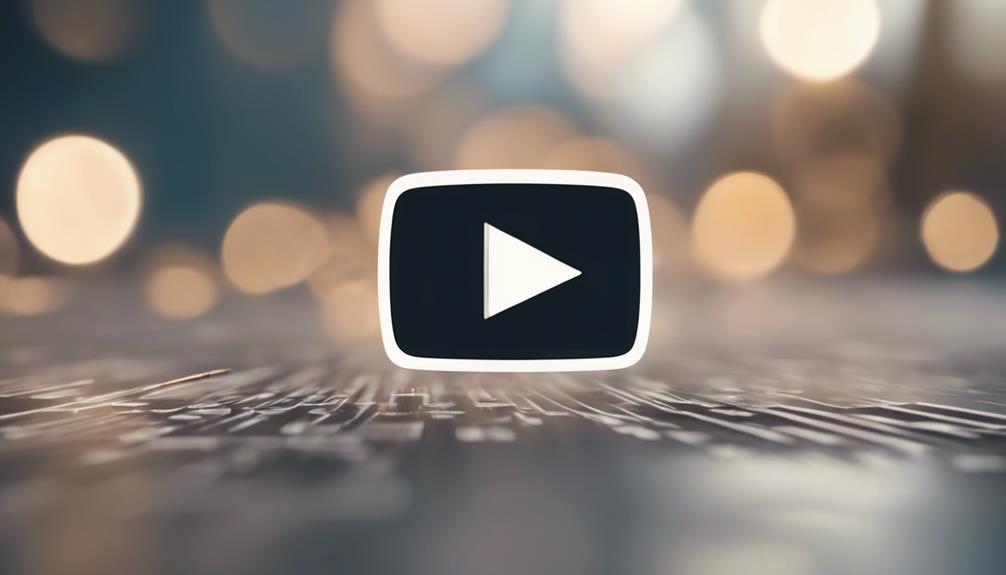
Is it OK to delete and reupload YouTube video?
While you might worry that deleting and reuploading a YouTube video could potentially harm your channel’s visibility, it’s not always a black and white issue. It’s true that this action can have implications for your channel traffic and viewer engagement, but there are also situations where it might benefit you.
What if the advantages outweigh the drawbacks? Should you consider the potential loss of comments and the effects on video rankings? Let’s explore this intricate topic further to help you make an informed decision.
Key Takeaways
- Deleting and reuploading YouTube videos can negatively impact channel traffic and engagement metrics.
- Reuploads can confuse YouTube’s algorithm, potentially reducing video visibility and ranking.
- Deletion and reuploading can disrupt video monetization, leading to a potential drop in ad revenue.
- Instead of reuploading, consider alternatives like video editing tools, changing privacy settings, and using YouTube Premieres.
Understanding YouTube’s Algorithm

To fully grasp the implications of deleting and reuploading a YouTube video, you first need to understand how YouTube’s algorithm works. It’s a sophisticated system, designed to provide the best possible user experience while maximizing ad revenue. It prioritizes video visibility based on a variety of factors, including engagement metrics like views, likes, comments, shares, and watch time.
Now, you might think you’re smart enough to outwit this system through algorithm manipulation. Perhaps you believe that deleting a video with poor performance and reuploading it will give it a fresh start, a new chance at gaining visibility. Unfortunately, you’d be wrong. YouTube’s algorithm isn’t easily fooled. It keeps track of your video’s metadata, meaning its original upload date, view count, and other engagement stats, even after you’ve deleted the video.
When you reupload that same video, YouTube recognizes it. The algorithm doesn’t view it as new content but rather continues its previous performance trajectory. This means your video’s visibility won’t magically improve by deleting and reuploading. It’s a risky strategy that isn’t likely to pay off in the way you hope, and could potentially harm your channel’s overall performance.
Implications for Channel Traffic
When considering whether to delete and reupload a YouTube video, it’s crucial to weigh the potential impact on channel traffic.
You must think about how this choice could affect viewer engagement, alter your standing with YouTube’s algorithm, and erase all original comments.
Each of these factors can significantly influence your channel’s visibility and growth.
Impact on Viewer Engagement
Deleting and reuploading your YouTube video can significantly impact viewer engagement, potentially disrupting the steady traffic flow to your channel. This action may influence your engagement metrics and audience retention.
Consider these four key points:
- Viewers’ Frustration: Repeated notifications might annoy viewers, leading to reduced engagement.
- Lost Interactions: Comments, likes, and shares get deleted along with the video. This could harm your engagement metrics.
- Audience Retention: Reuploads might confuse viewers, causing a drop in audience retention if they can’t find the original content.
- Broken External Links: If your video was linked externally, those links will break, resulting in lost traffic.
Strategize your uploads carefully to maintain steady engagement and prevent any potential disruption to your channel’s traffic.
Algorithmic Effects
Beyond viewer engagement, consider how deleting and reuploading videos can mess with YouTube’s algorithm, which could potentially throttle your channel’s traffic. This algorithm manipulation may seem like a useful tool for content recycling, but it’s a double-edged sword.
YouTube’s algorithm is designed to reward new, unique content and discourage spam-like behavior. When you delete and reupload the same video, you’re essentially recycling content. This can confuse the algorithm, leading to less exposure for your video. It can also make your channel look suspicious, further reducing your chances of being recommended.
In the innovative world of YouTube, sticking to original, fresh content and avoiding unnecessary deletions and reuploads is key to maintaining and boosting your channel’s traffic.
Loss of Original Comments
In the wake of removing and reuploading a video, you’ll also lose any original comments, thereby potentially jeopardizing your channel’s traffic. Comments are vital for algorithmic engagement, audience interaction, and overall channel health.
Here are four implications you need to consider:
- Loss of Valuable Feedback: Original comments often contain constructive criticism, compliments, or content suggestions. Losing them means missing out on crucial audience insights.
- Reduction in Engagement: Comments contribute to video engagement, influencing its YouTube ranking.
- Hindrance to Community Building: Comments foster a community around your channel. Deleting them disrupts this connection.
- Ethical Considerations: The ethics of reuploading should also be pondered. Is it fair to erase viewers’ voices?
Consider comment preservation techniques before reuploading. Make your decisions with both ethics and strategy in mind.
Impact on Viewer Engagement
Consider the influence that deleting and reuploading videos can have on viewer engagement.
You’ll need to evaluate how reuploads affect engagement metrics, such as likes, shares, and comments.
It’s also essential to understand how viewers respond to redos, as their reaction can significantly impact their engagement with your channel.
Reuploads’ Effect on Engagement
When you delete and reupload a YouTube video, it’s critical to understand the potential impact on viewer engagement. The timing of your reupload and the efficacy of your thumbnail can significantly influence this.
Consider these four elements:
- Reupload timing: The time you choose to reupload can affect the visibility of your video, and subsequently, viewer engagement.
- Thumbnail efficacy: A compelling thumbnail can attract more views and improve engagement.
- Algorithm adjustment: YouTube’s algorithm may need time to adjust to your reupload, potentially affecting initial engagement.
- Viewer familiarity: Regular viewers may disengage if they perceive the reupload as a repetition.
Understanding these factors can help you make strategic decisions about when and how to reupload videos for maximum viewer engagement.
Viewer Response to Redos
As you navigate the complexities of managing deleted and reuploaded videos, it’s equally important to gauge how viewers respond to these redos and the subsequent influence on engagement. Viewer reactions can be highly variable, depending largely on how the redo is presented.
Some viewers may experience ‘redo backlash’, feeling frustrated by the perceived inconsistency. This can lead to a drop in engagement as viewers become less inclined to invest time in content they fear may disappear.
Conversely, others may showcase ‘audience adaptation’, appreciating the effort to improve content quality. These individuals can become more engaged, seeing the redo as a sign of commitment to delivering the best possible content. To minimize backlash and encourage adaptation, clear communication about the reasons for reuploads is paramount.
Effects on Video Rankings

You mightn’t realize it, but deleting and reuploading your YouTube video can significantly impact its rankings. The first thing to understand is how YouTube’s algorithm changes can affect your video’s performance. When you initially upload a video, YouTube’s algorithm gives it a boost in the rankings. This is a part of their video optimization strategy to promote new content. Deleting and then reuploading the video can confuse this algorithm, potentially causing your video to lose its initial boost.
Let’s delve into the specifics of how this could affect your video rankings:
- Loss of Initial Boost: As mentioned, YouTube’s algorithm favors new content. Deleting and reuploading remove that initial advantage.
- Lowered Ranking: Reuploaded videos can be seen as duplicates, leading to lowered rankings in search results.
- Loss of Engagement Metrics: Likes, shares, and watch time contribute to your video’s ranking. Deleting your video erases these metrics.
- Negative Impact on Channel Authority: Frequent deletions and reuploads can harm your channel’s overall standing with YouTube’s algorithm.
Potential Loss of Comments
Another crucial aspect to consider is the potential loss of comments when you delete and reupload a video on YouTube. Comments often serve as a valuable metric for gauging viewer engagement and feedback. When you delete a video, you’re not just erasing the views or likes; you’re also wiping out all the comments that your video has garnered.
The implications are twofold. Firstly, it’s about comment sentiment. The comments section is where your viewers express their opinions, their ‘likes’ and ‘dislikes’, their suggestions and critiques. It’s a goldmine of information that can guide you in content creation. By deleting the video, you lose this critical feedback.
Secondly, it’s about video authenticity. Comments add a certain credibility to your video. They show that real people are watching, reacting, and engaging with your content. When you re-upload the video and the comments are zeroed out, it can create a perception that the video is brand new, untouched by the community. This might even lead to skepticism among some viewers regarding the authenticity of your video.
Impact on Video Monetization

Deleting and reuploading your YouTube video can significantly impact its monetization, presenting yet another layer of complexity to consider. It’s crucial to understand YouTube’s monetization policies and the ad revenue implications that come with deleting and reuploading content.
Here’s a concise analysis of how this action can affect your video’s monetization:
- Loss of Monetization Status: If your video was previously monetized, deleting it means losing that status. The reuploaded video must meet YouTube’s monetization policies from scratch.
- Potential Ad Revenue Drop: As the reuploaded video starts over in terms of views, there might be a significant drop in ad revenue until it regains traction.
- Disruption of Revenue Flow: Even if your reuploaded video eventually regains its popularity, there will be a period of disruption in ad revenue flow.
- Risk of Policy Violations: Repeated deletion and reuploading might flag your account for violating YouTube’s policy, possibly leading to a suspension.
Alternatives to Video Reuploading
Instead of deleting and reuploading a video, you have other options that may better suit your needs.
Consider using built-in video editing tools, adjusting your video privacy settings, or making use of YouTube Premieres.
Each offers unique benefits that can potentially solve your issue without resorting to a complete reupload.
Video Editing Tools
To avoid the potential downsides of deleting and reuploading your YouTube videos, you might want to consider using video editing tools as a more suitable alternative. Remember, content copyright and the perfect video thumbnails could be jeopardized in the reuploading process.
Here are the top 4 innovative editing tools:
- Adobe Premiere Pro: This industry-standard tool enables you to edit videos in any format, including 4K and VR.
- Final Cut Pro X: Exclusive to Mac, this tool offers advanced features such as multi-cam editing and 360-degree video editing.
- iMovie: This free tool, also for Mac users, provides templates, filters, and special effects to enhance your videos.
- DaVinci Resolve: This professional-grade tool offers both video editing and color correction.
These tools can help you perfect your videos without the need to delete and reupload.
Private Vs Public Settings
Utilizing YouTube’s private and public settings provides another practical alternative to reuploading, allowing you to manage who can view your video content without risk to your video’s integrity or viewership. Understanding these settings is crucial to grasp privacy implications and content accessibility.
Here’s a comparison:
| Setting | Privacy Implications | Content Accessibility |
|---|---|---|
| Public | Open to all, less privacy. | Easily accessible to everyone, enhancing visibility. |
| Private | Great for privacy, only selected viewers can access. | Limited access, might affect viewership negatively. |
| Unlisted | Somewhat private, only those with the link can view. | More accessible than private, less than public. |
| Scheduled | Privacy until a set time. | Accessible when published. |
| Draft | Maximum privacy, only you can view. | Not accessible until published. |
In essence, it’s about balancing your privacy needs with the necessity of reaching your audience. You can switch between these settings at any time, providing versatility without the need to reupload.
Utilizing Youtube Premieres
Shifting your focus to YouTube Premieres could offer a viable alternative to video reuploading, letting you create a public watch party for your new content. This feature allows you to schedule a video upload and create hype around it.
- Premiere Scheduling: Set a specific date and time for your video launch. This helps build anticipation among your audience.
- Live Chat: Engage with your audience in real-time during the premiere, enhancing viewer experience.
- Live Chat Moderation: Control the conversation happening around your content. This ensures a positive and safe environment for viewers.
- Replay Comments: Post-premiere, viewers can still see the chat, maintaining the sense of community.
Case Study: Reuploading Success Stories
While you might be apprehensive about deleting and reuploading your YouTube videos, several creators have found success in this strategy, enhancing their viewership and engagement rates significantly. Despite the reuploading challenges, such as potential loss of views or comments, these creators capitalized on the opportunity to improve video quality, update content, or optimize their SEO.
Take for example, a tech vlogger who deleted and reuploaded a two-year-old video tutorial on smartphone usage. They re-edited the video, incorporating new information and improved graphics, and reuploaded it. The result? A whopping 200% increase in views and a surge in engagement within just a few weeks. Their success metrics, such as likes, shares, and watch time, also skyrocketed.
Similarly, a food blogger achieved a 150% rise in viewership and engagement rates by reuploading a video recipe with better lighting and clear step-by-step instructions. The improved content resonated with the audience, translating into increased views and higher interaction rates.
These success stories illustrate that with careful analysis and strategic execution, reuploading can be an innovative approach to refresh your content, extend its lifespan, and boost your performance metrics.
Repercussions on Subscriber Notifications

However, it’s important to consider how deleting and reuploading videos can impact your subscribers’ notifications. The notification settings on YouTube are intricate and any modification can affect them, potentially causing ripple effects on subscriber reactions.
Here’s an analytical breakdown of the repercussions:
- Confusion: Subscribers might receive multiple notifications for the same video, causing confusion. They may not understand why they’re seeing the same content twice, which could lead to frustration.
- Distrust: Repeated alerts can lead to a sense of mistrust. Subscribers may question your channel’s consistency and reliability, which could negatively impact your reputation.
- Notification Fatigue: Too many notifications can lead to alert fatigue. If subscribers feel bombarded, they might disable notifications for your channel or, worse, unsubscribe.
- Algorithmic Implications: YouTube’s algorithm may interpret the reuploading as spamming, potentially diminishing your content’s reach and visibility.
Innovation is key in today’s digital landscape. However, it’s crucial to consider the potential impact on your subscribers’ experience. Always keep your audience in mind when modifying content. Ensure your actions don’t negatively affect notification settings or trigger adverse subscriber reactions.
The Role of Video Analytics
In your quest for YouTube success, understanding the role of YouTube video analytics can be a game changer. It’s not just about producing excellent content, it’s about understanding and leveraging your video’s performance data. Analytics provide insight into audience demographics, engagement, and viewer behavior, which can influence your content strategy.
The two key elements you should focus on are Video Thumbnail Optimization and Social Media Cross Promotion. A well-optimized thumbnail draws eyeballs, increasing click-through rates. Analytics can reveal what works best, whether it’s a vibrant color scheme, compelling text, or a catchy image. Experiment and let the data guide your decisions.
Social Media Cross Promotion is another vital element. Share your videos across various social platforms and track the source of your traffic. This allows you to identify which platform generates the most engagements, helping you to focus your promotional efforts effectively.
Best Practices for Video Updates

Taking your YouTube success to the next level involves not only leveraging analytics but also knowing the best practices for updating your videos. Here are four innovative approaches to ensure your content remains fresh, engaging, and optimized:
- Thumbnail Optimization: A compelling thumbnail can drastically improve your video’s click-through rate. Change your thumbnail image periodically with a visually appealing, high-resolution picture that gives viewers a snapshot of your video’s content.
- Video Transcription: Adding transcriptions to your videos can boost their SEO value. It’s an inclusive practice that makes your content accessible to viewers who are deaf, hard of hearing, or speak a different language.
- Update Video Description: Regularly update your video descriptions with relevant keywords and hashtags. This will increase the likelihood of your video appearing in search results.
- Engagement Interaction: Responding to comments and queries under your video can boost engagement. It also provides constructive feedback that you can use for future updates.

